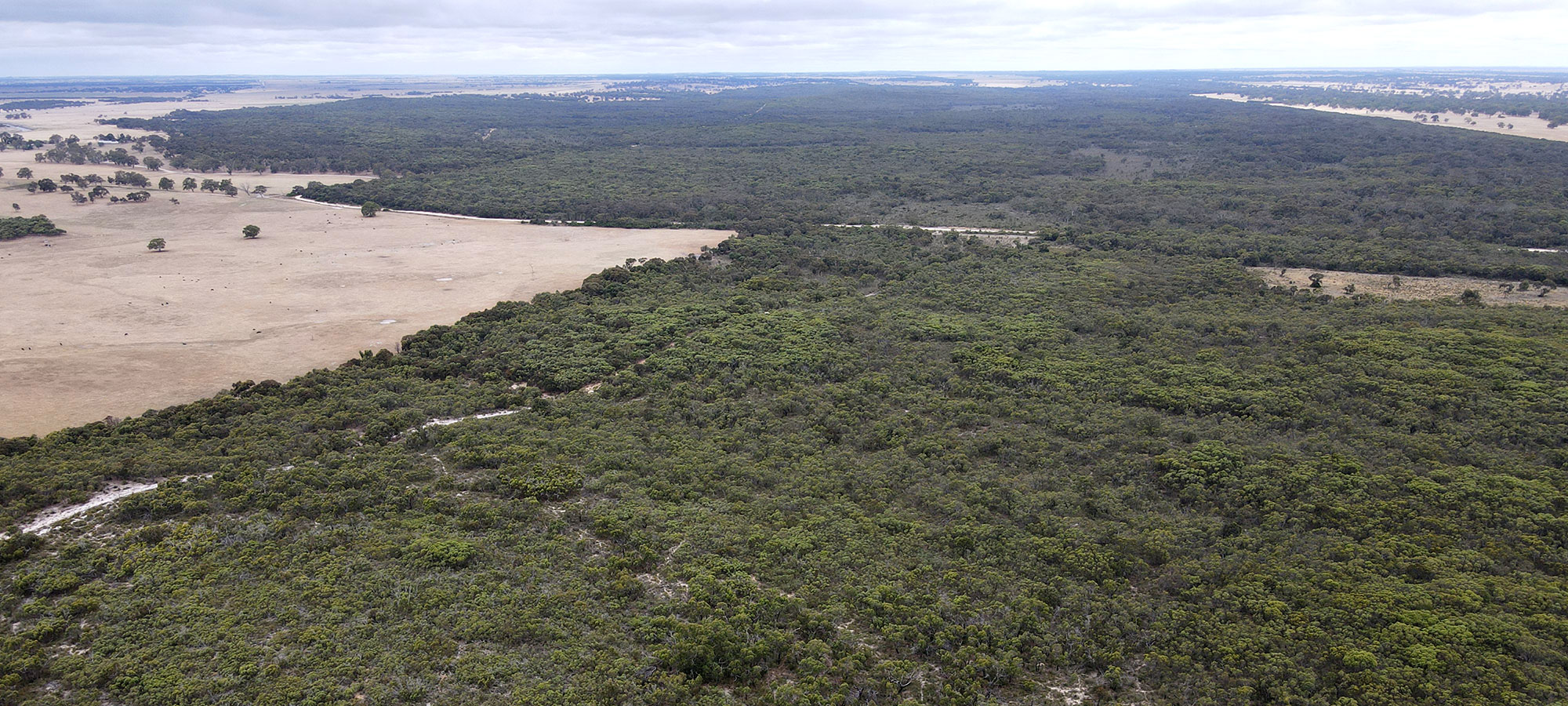We are delighted to share that we recently settled the purchase on our latest nature reserve, Bullock Bridge. The 202-hectare property is located east of Kingston on the Limestone Coast, adjacent to the Mount Scott Conservation Park and on the traditional lands of the Meintangk people. It is part of one of the largest inland blocks of native vegetation in this southern region and has very high biodiversity values.
We sincerely thank everyone who contributed to this acquisition, particularly leading benefactors Professor Hugh Possingham and Phill Cassey, who each pledged $100,000.
The high biodiversity values and connectivity to Mount Scott Conservation Park make this an invaluable block of bushland in the regional context. The Mount Scott region is rich in botanical diversity, with 393 plant species recorded on the Atlas of Living Australia, including 32 terrestrial orchid species. This diversity in plant life makes the area a remarkable bird sanctuary and regionally significant, with the mosaic of habitat types supporting a high degree of species richness.

Of the approximately 140 species recorded in neighbouring Mount Scott Conservation Park, notable bird species include:
- Malleefowl (Leipoa ocellata, Vulnerable EPBC)
- Blue-winged Parrot (Neophema chrysostoma, Vulnerable, EPBC)
- White-winged Chough (Corcorax melanorhamphos, Rare, South Australia)
- Satin Flycatcher (Myiagra cyanoleuca, Endangered, South Australia)
- Restless Flycatcher (Myiagra inquieta, Rare, South Australia)
- Flame Robin (Petroica phoenicea, Vulnerable, South Australia)
- Beautiful Firetail (Stagonopleura bella, Rare, South Australia)
Following the property settlement, our conservation team is now commencing a full reserve audit to inform monitoring programs, including baseline biodiversity surveys, that will allow us to prepare a comprehensive reserve management plan. We will also undertake initial essential works, including repairing and replacing damaged fencing to prevent unwanted grazing pressure and developing and implementing threat management strategies.
Thanks again to everyone who has supported this valuable step towards providing increased land protection in South Australia’s southeast. We look forward to sharing further updates with you as conservation efforts progress on Bullock Bridge Nature Reserve.